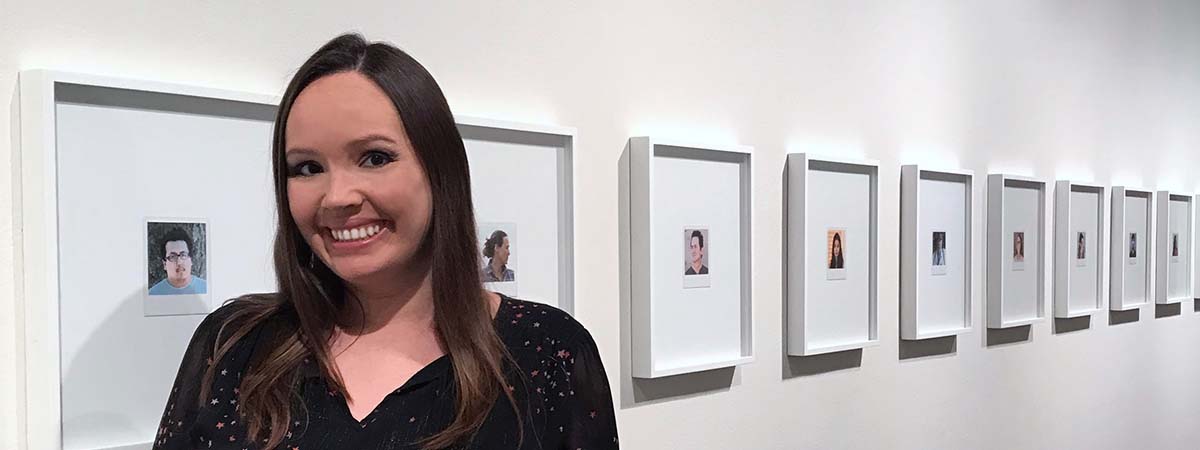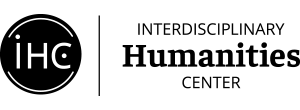
26 May IHC Public Humanities Graduate Fellow Intern Alesha Claveria
May 26, 2020
Alesha Claveria is a Ph.D. candidate in the Department of Theater and Dance. Her research interests include contemporary Native North American drama and Indigenous theory. As an IHC Public Humanities Graduate Fellow, Claveria interned at the Museum of Contemporary Art Santa Barbara (MCASB).
As part of the Public Humanities Graduate Fellows program, you have been interning in the MCASB’s curatorial department. Tell us about the work you have been doing.
My work at MCASB has consisted of four main tasks: researching, writing, editing, and creating documents. I researched various contemporary artists and institutions, including James Benning, Maurizio Cattelan, Ari Benjamin Meyers, N. Dash, and the Fondazione Sandretto Re Rebaudengo. MCASB materials had to appeal to many different publics, so I had to gather all kinds of information, including scholarly materials, outreach materials, and newspaper articles. Sometimes I passed this information along to team members. Other times, I was assigned a writing or editing task surrounding the materials I had researched. For example, I read a selection of academic articles by UCSB Professor Dick Hebdige on artist James Benning and produced a short scholarly piece that brought together those sources. Portions of this work were then used in the exhibition text for James Benning: Quilts, Cigarettes & Dirt (Portraits of America). I’ve also helped edit texts produced by others so that the writing was both scholarly and of general interest. I collaborated on a variety of documents, writing and editing drafts back and forth with colleagues, including assisting with a grant proposal and press releases.
What sparked your interest in the Public Humanities Graduate Fellows program, and this internship in particular?
What interested me most about the Public Humanities Graduate Fellows program was the selection of organizations that were offering internships. I was excited by the array of different experiences I imagined while reading about the different organizations and the kinds of work available to a Ph.D. student. Just researching the fellowship opened my mind to the possibilities of being a public humanist. I started to feel that my skills had much broader applications than I’d realized. I then read about the fellowship coursework and found that fellows would be prepared with skills to help them be successful in their internships. That combination of exciting internship possibilities and program support to gain applicable skills gave me confidence that I could be successful in the program.
As a humanities graduate student, how have your academic skills contributed to your success in this role?
A lot of what I did in the internship is what I do as a graduate student every day. I gathered and evaluated information, performed close readings, drafted, and edited. All these tasks have been developed and enhanced by my graduate education. My ability to read quickly and remember lots of details, honed in graduate school, was particularly critical to my success as I had to find and sometimes review dozens of documents a day. The academic eye for detail and willingness to delve into archival materials allowed me to find inaccuracies in timelines and other exhibition materials so they could be corrected. I was especially praised for my scholarly yet accessible style of writing.
Your research focuses on contemporary Native North American drama and Indigenous theory. How has this informed your work at the museum, and, conversely, how has your internship impacted your research?
I was sensitive to particular cultural and political connections in the work of the artists. For example, James Benning’s sack quilt piece entitled after Maggie Louise Gudger had the potential to be inflammatory. I saw how a museum could be a site of power and struggle and worked to help draft museum texts that were sensitive to issues I saw. Both James Benning’s and N. Dash’s use of dirt in their artwork, though with very different applications, stimulated me to consider how artists take authority over objects in culturally inflected and often jarring ways. The museum has impacted my research in that it has exposed me to an entire field (artists, works, readings, practices) that I never knew existed. My family owns a gallery, and I grew up around local art, but the international art scene is a whole other beast. I feel much more fluent in the arts now and would be more comfortable incorporating the analysis of plastic arts into my research.
How has your work at MCASB and participation in the Public Humanities Graduate Fellows program shaped your thoughts about your future as an engaged humanist?
I’m definitely more confident in my ability to contribute as a humanist to non-academic organizations. The program’s “Skills for the Public Sphere” course trained me in so many of the tasks common to public humanities work that I haven’t learned anywhere else, and I was asked to apply many of those new skills in a practical setting in the internship. The internship also gave me one skill that I have had much less experience with in graduate school, project collaboration. Often collaboration in graduate school has consisted of attending meetings and dividing tasks. Rarely have I had the opportunity to collaborate in real-time on an actual group project. This experience with collaboration has been a game-changer for me in terms of my confidence in my ability to contribute to advancing the mission of a museum, charity, or foundation.
Click here to learn more about IHC Public Humanities Graduate Fellows Internships.

